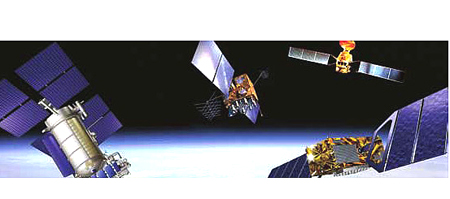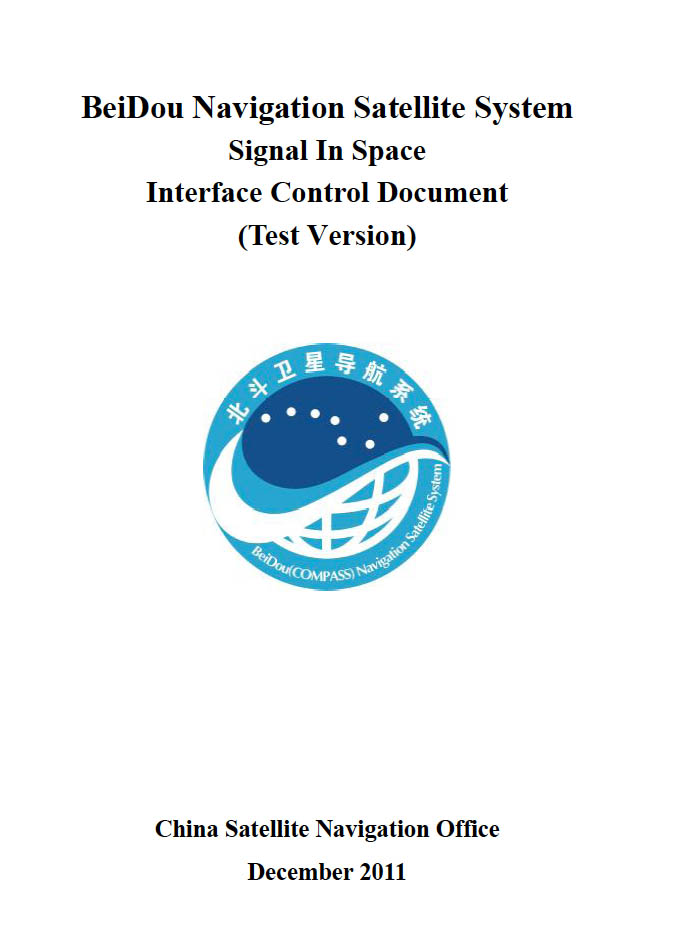[Updated October 3] All five of the world’s major satellite navigation systems are poised to offer new capability — if the money comes through — program representatives told attendees at the recent Institute of Navigation’s GNSS 2011 conference in Portland.
The satellite navigation systems in China, Japan, and the United States have each recently had new satellites added, while those in Russia and Europe are poised for new launches. Budgets are in flux for most systems, however, so it remains to be seen how the systems will advance over the next year.
[Updated October 3] All five of the world’s major satellite navigation systems are poised to offer new capability — if the money comes through — program representatives told attendees at the recent Institute of Navigation’s GNSS 2011 conference in Portland.
The satellite navigation systems in China, Japan, and the United States have each recently had new satellites added, while those in Russia and Europe are poised for new launches. Budgets are in flux for most systems, however, so it remains to be seen how the systems will advance over the next year.
GPS program planners, who deal with an annual appropriations process, might be envious of the Russian system, which already has a defined a budget for GLONASS that spans nine years.
Russia’s plan builds on a freshly replenished system that has rebounded from a minimal constellation of only seven satellites in 2002, to the current fleet of 23 operational satellites, three spares, and an additional spacecraft in the commissioning process.
Though Russia suffered a setback in December when a fuel loading error led to the loss of three satellites, the program is on track to fly a full constellation by the end of this year, according to the Russian Federal Space Agency’s Dr. Sergey Revnivykh. On October 3, after Inside GNSS’s interview with Revnivykh, Russia successfully launched a GLONASS- M satellite, to be followed by four more spacecraft by the end of the year. The first production K-class satellite is set for launch on February 26.
Russia plans to continue to update its constellation and to replace its current FDMA satellites with 24 CDMA satellites by the end of 2020. Though FDMA was easier to do 30 years ago when the constellation was designed, it is much easier now to provide the real-time, centimeter accuracies now demanded by today’s GNSS users using CDMA, said Revnivykh.
Though the budget is in place, said Revnivykh, the program has yet to be approved. That approval is expected before the end of the year, he said.
Compass
The Chinese are also working to complete the initial regional phase of Compass. The satellite network transitioned last year from a demonstration system to an operational navigation system. Its constellation has nine satellites in place and plans call for seven more launches by the end of 2012.
Xiancheng Ding of the China Satellite Navigation Office confirmed that the system’s Interface Control Document would be available “world wide” and be released this year, probably in October.
Several Chinese companies have already developed chipsets for receivers incorporating Compass GPS, GLONASS, and Galileo capabilities. Shaowei Han, president of Unicore, a Beijing company that has developed Compass chipsets, said his company also has a Compass/GLONASS combination and, for high precision, a Compass/GPS chipset.
The Compass system, Han said, will also be able to send very short, text messages.
QZSS
Japan is in the process of evaluating its plans to build on the success of its initial satellite. The first spacecraft in the Quasi-Zenith Satellite System (QZSS), named Michibiki, was launched on September 11.
QZSS is an augmentation system for GPS signals aimed at dealing with Japan’s urban canyons. Without QZSS the GPS signal was only available 39.5 percent of the time in one test city, said Dr. Satoshi Kogure of the Japan Space Exploration Space Agency. That jumped to 60.9 percent availability when the QZSS signal was added.
The results so far have been so positive that a concept study is underway to extend QZSS into a national infrastructure capability. If approved the constellation might then grow to include four quasi-zenith satellites and three satellites in geosynchronous orbits.
The Japanese press announced on September 30 that Prime Minister Yoshihiko Noda and his cabinet had decided to go ahead with the expansion plan and to seek ¥4.1 billion for QZSS in the 2012 budget.
GPS
In the United States, the Air Force is now testing the second of its new IIF satellites and has completed the preliminary design review on the new OCX ground control segment needed to support the GPS III satellites.
Though the GPS constellation has a full complement of 30 active satellites, a difficult budget period is on the horizon, and the program is looking at techniques to save money. One technique is to shift to launching multiple satellites at a time as the Russians do.
Dual launches of GPS III satellites on an Atlas vehicle, or perhaps on a Delta rocket are “absolutely feasible,” said Col. Bernard J. Gruber, director of the U.S. Air Force GPS Directorate told Inside GNSS. “This is one that really makes sense for us.”
Though none of the speakers wanted to volunteer when an audience member asked which country would step up to build a station to monitor all systems together, there was near-consensus on the issue of the new broadband network proposed by LightSquared.
The U.S. Air Force, which has been very vocal in the past about its concerns that the broadband wireless system proposed by LightSquared could interfere with its receivers, is actively involved in testing LightSquared’s effects, said Gruber. Indeed, Jeffrey Carlisle, LightSquared’s Executive Vice President of Regulatory Affairs and Public Policy told a September 15 hearing before the House Committee on Science, Space, and Technology that classified tests of military receivers had already been set.
The other system representatives said that that the LightSquared proposal should be monitored and the international community should consider working cooperatively to protect GNSS services.
I agree that [LightSquared] is not only a U.S. domestic issue,” said Kogure, who suggested the issue needed to be watched carefully. “Once approved for service it can easily spread globally.”
Galileo
The European Union and European Space Agency are also waiting — but in the EU’s case it is for the launch of the first of the four Galileo in-orbit validation (IOV) satellites.
The first two spacecraft, already delivered to their launch site at the Kourou Space Center in French Guiana, are set to launch October 20, said Hillar Tork, the European Commission’s section head for Galileo services and exploration. That launch will be followed by that of two more IOV spacecraft and then four launches a year with two satellites each to complete the initial Galileo constellation by 2014 to 2016.
That Initial Operational Capability (IOC) constellation will enable partial services for search and rescue and Galileo’s Open Service. The Full Operational Capability system of 30 satellites should be completed in the 2019-2020 timeframe.
The EU, however, is already reevaluating some of the services it plans to offer, said Tork. Specifically the Safety of Life service, which is primarily intended for aviation users, has been removed from the IOC plan and is being reprofiled in light of its complexity and cost.






